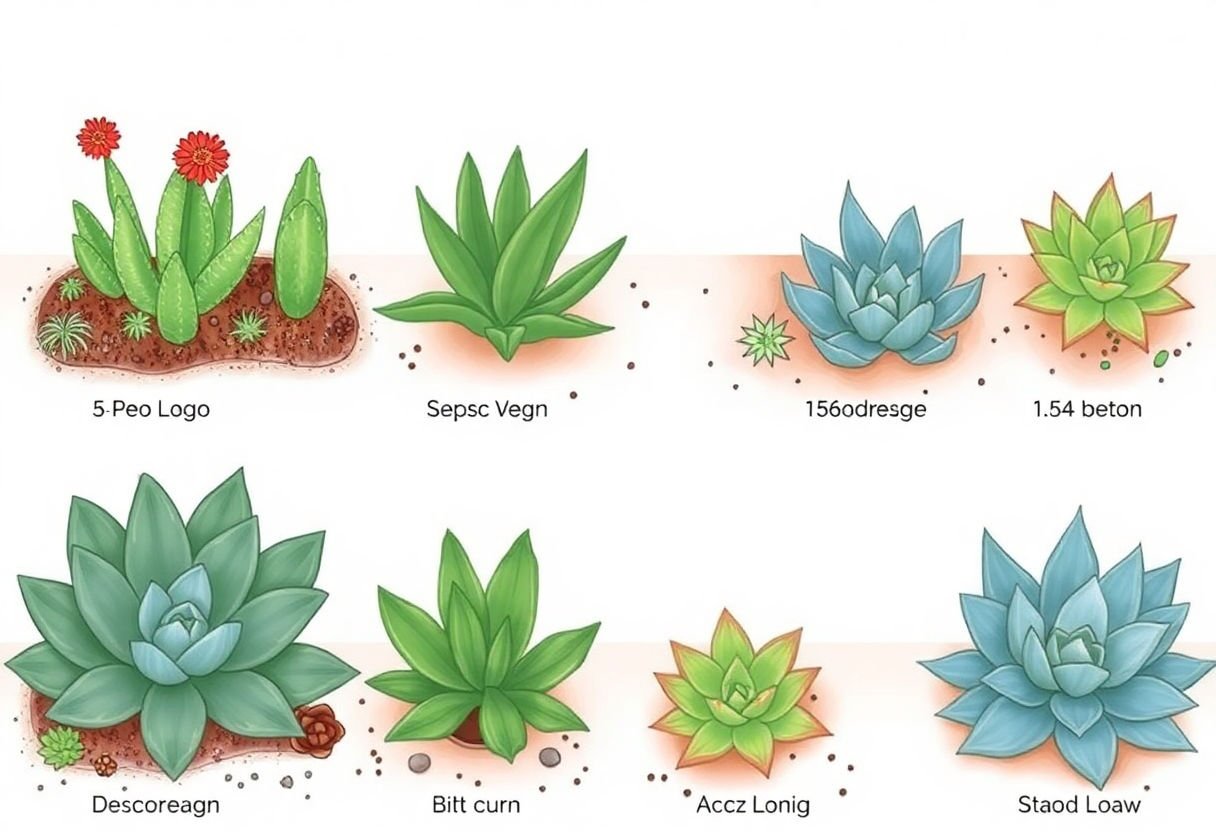Succulents have surged in popularity due to their striking appearance and low-maintenance allure, captivating both novice and seasoned gardeners. However, achieving flourishing growth hinges on understanding the specific zones where these resilient plants thrive best. This guide navigates through the intricacies of USDA Hardiness Zones, offering a pathway to discover succulent varieties adaptable to diverse climates—from the cooler expanses of zones 3 to 6, the temperate regions of zones 7 to 9, and the warmer locales of zones 10 to 13. Dive deeper to ensure your succulents achieve optimal growth and vitality in their ideal environments.
Key Takeaways
- Succulents thrive in specific USDA hardiness zones, with different varieties suited to both cooler and warmer climates.
- Understanding your local climate is crucial for selecting the right succulents to ensure healthy growth and resilience.
- Common misconceptions include the belief that succulents only thrive in hot, arid regions, whereas many species can adapt to diverse environmental conditions.
- Indoor growth extends the range of viable environments for succulents, offering controlled conditions for species requiring specific care.
- Each USDA zone features unique succulent varieties, enabling gardeners to choose plants that complement their regional characteristics.
Understanding USDA Hardiness Zones
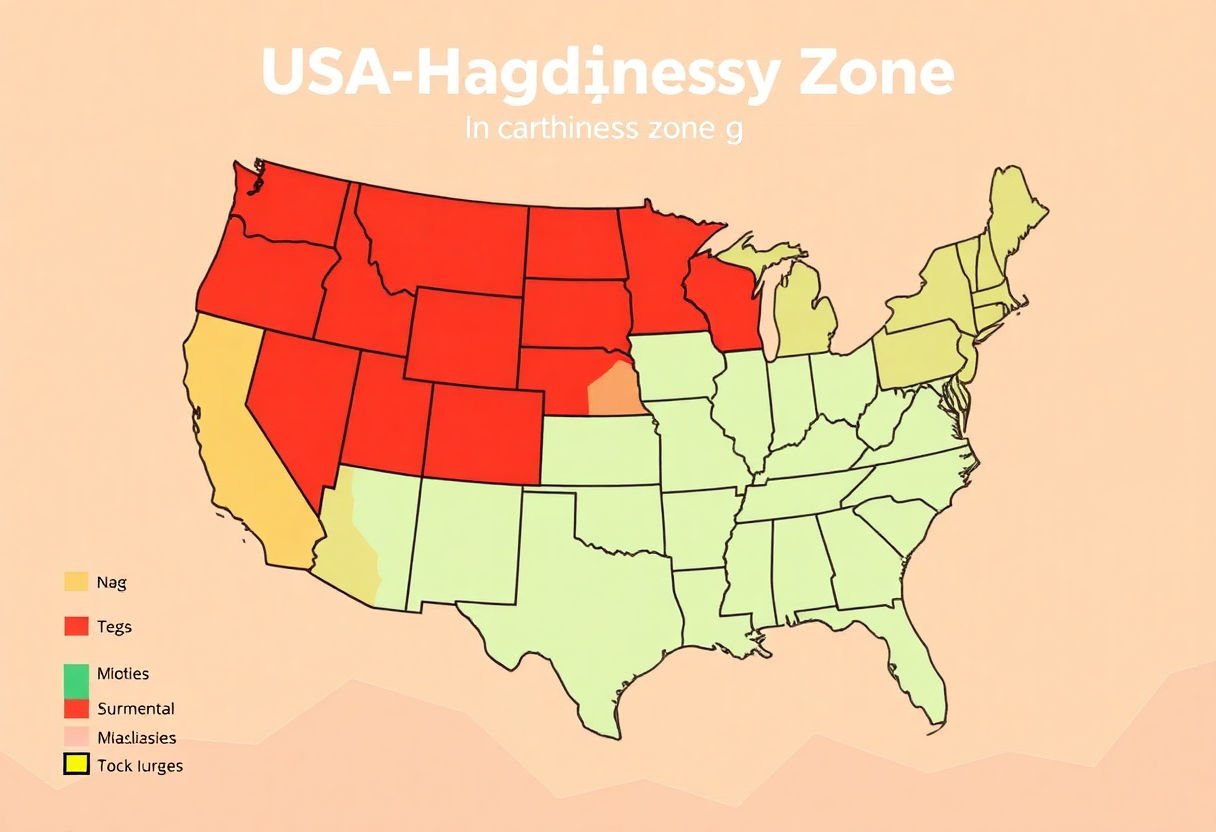
The USDA Hardiness Zones are a crucial tool for gardeners in the United States, providing a framework for understanding where various plants, including succulents, can grow best based on climate conditions. These zones are determined by the average annual minimum winter temperature, divided into 13 distinct zones across the nation. Each zone encompasses a 10-degree Fahrenheit range, with Zone 1 being the coldest and Zone 13 the warmest.
For succulent enthusiasts, knowing the USDA Hardiness Zone of their location is essential. These zones help in determining the types of succulents that can thrive outdoors throughout the year without additional protection. While most succulents are native to arid, warmer climates, many adapt well to different zones, given the right conditions.
Succulents generally prefer well-drained soil and plenty of sunlight, but their hardiness varies significantly. Understanding these zones ensures that gardeners can select succulent species that will withstand their region’s winter temperatures. For example:
-
Zones 3-6: Known for their cold climates, suitable succulent options include Sempervivum and certain species of Sedum that can tolerate frost.
-
Zones 7-9: Temperate regions where succulents like Agave and Echeveria flourish, given moderate winter protection.
-
Zones 10-13: Warm, often frost-free areas where a wider range of succulents such as Aloe and Cactus thrive with minimal concern for cold damage.
By aligning selection with the USDA Hardiness Zones, gardeners can achieve a successful and flourishing succulent garden, tailored to their specific climatic conditions.
Succulents for Zones 3-6
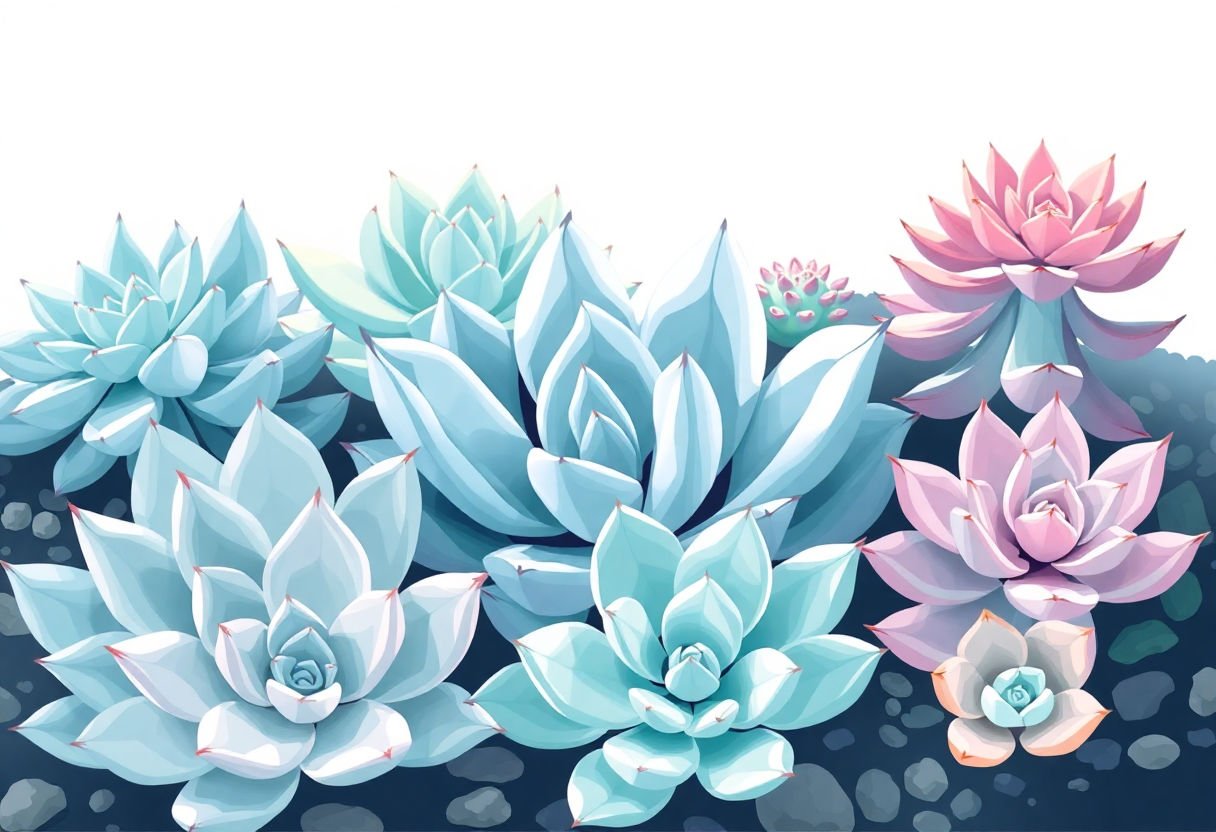
In USDA zones 3 to 6, gardeners may believe succulents are challenging to grow due to cooler temperatures and harsh winters. However, hardy succulents have adapted to flourish in these climates, providing options for those eager to add these resilient plants to their landscape.
One notable group of succulents suitable for these zones is the sempervivum, commonly known as hen and chicks. These succulents thrive in cooler climates, exhibiting remarkable resilience to cold and frost. Their rosette forms and vivid colors make them a striking addition to outdoor gardens.
Another excellent choice for cold zones is sedum, also known as stonecrop. This variety offers numerous options, including groundcovers and tall, flowering plants, perfect for rock gardens or borders. Sedums are known for their drought tolerance and can handle freezing temperatures, making them ideal for zones 3-6.
A unique variety to consider is Opuntia humifusa, or eastern prickly pear. This cactus is native to the eastern United States and is surprisingly cold-hardy, tolerating snow and freezing conditions. It requires full sun and well-drained soil to thrive, rewarding gardeners with vibrant blooms in warmer months.
These succulent varieties for zones 3-6 require minimal maintenance once established. To ensure success, implement mulch during winter to offer extra protection against severe frost and avoid overly wet conditions by ensuring proper drainage. This careful approach allows succulent enthusiasts to enjoy these stunning plants even in cooler regions.
Succulents for Zones 7-9
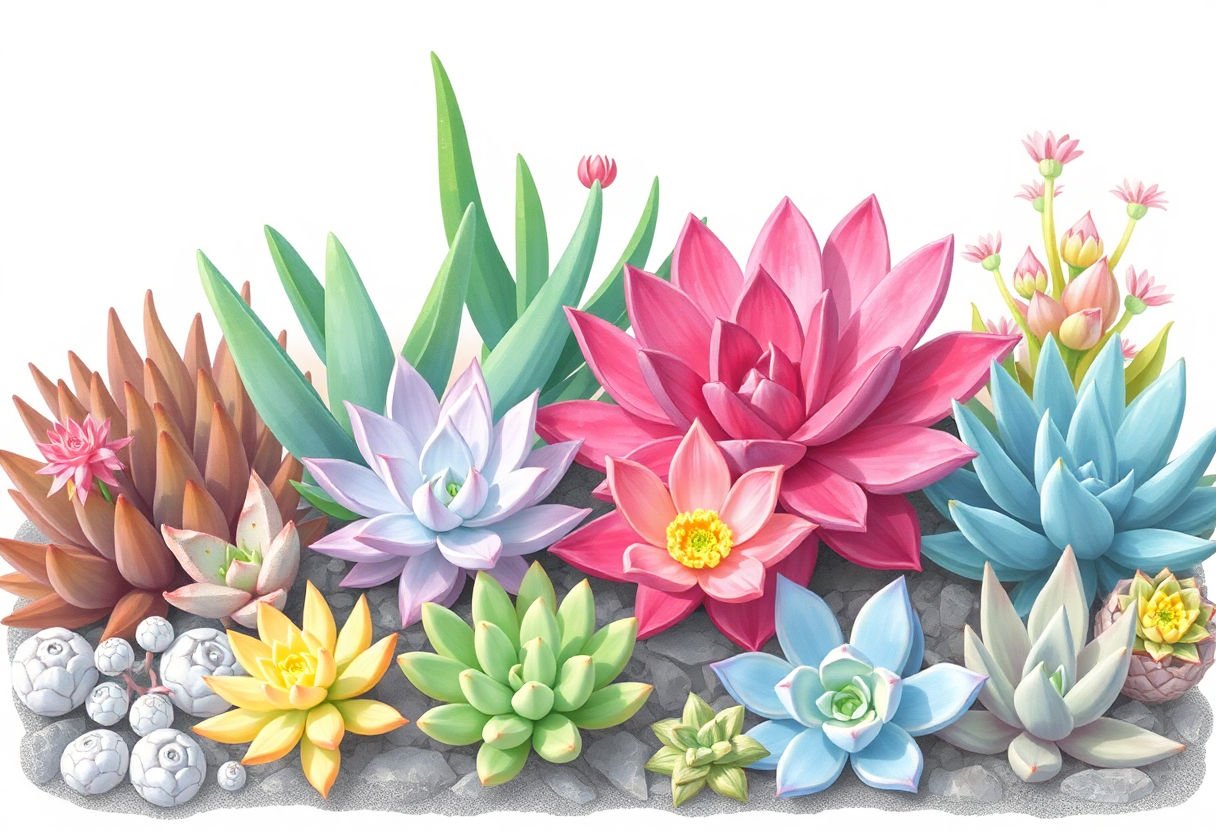
In USDA hardiness zones 7 through 9, the climate conditions are ideal for a variety of succulents due to the mild winters and moderate temperatures. These zones typically experience less extreme temperature fluctuations compared to cooler or hotter regions, creating a hospitable environment for succulents to thrive.
One of the appealing aspects of growing succulents in these zones is the extended growing season. With warmer days persisting into the autumn months, these plants have ample opportunity to absorb sunlight, encouraging vibrant growth and rich coloration.
The selection of succulents for these zones should take into account both aesthetic preferences and environmental compatibility. For example, Agave varieties flourish under the full sun and can tolerate moderate droughts, making them well-suited for this temperate climate. Similarly, Hens-and-Chicks (Sempervivum) and Sedum extend their lively presence across gardens with their drought-resistant characteristics and attractive rosettes.
A noteworthy variety that excels in these areas is the Echeveria, known for its stunning rosette forms and diverse colors. Echeverias prefer a location where they receive plenty of sunlight but are sheltered from intense afternoon heat.
In addition to these, Aloe species are an excellent choice, offering not only visual appeal but also the benefit of medicinal uses. These succulents prefer semi-shaded conditions and are incredibly adaptable to the temperatures found in zones 7 through 9.
Understanding the specific needs of each succulent variety and providing them with appropriate care will ensure that gardens blossom beautifully in these zones, reflecting both the gardener’s effort and nature’s potential.
Succulents for Zones 10-13
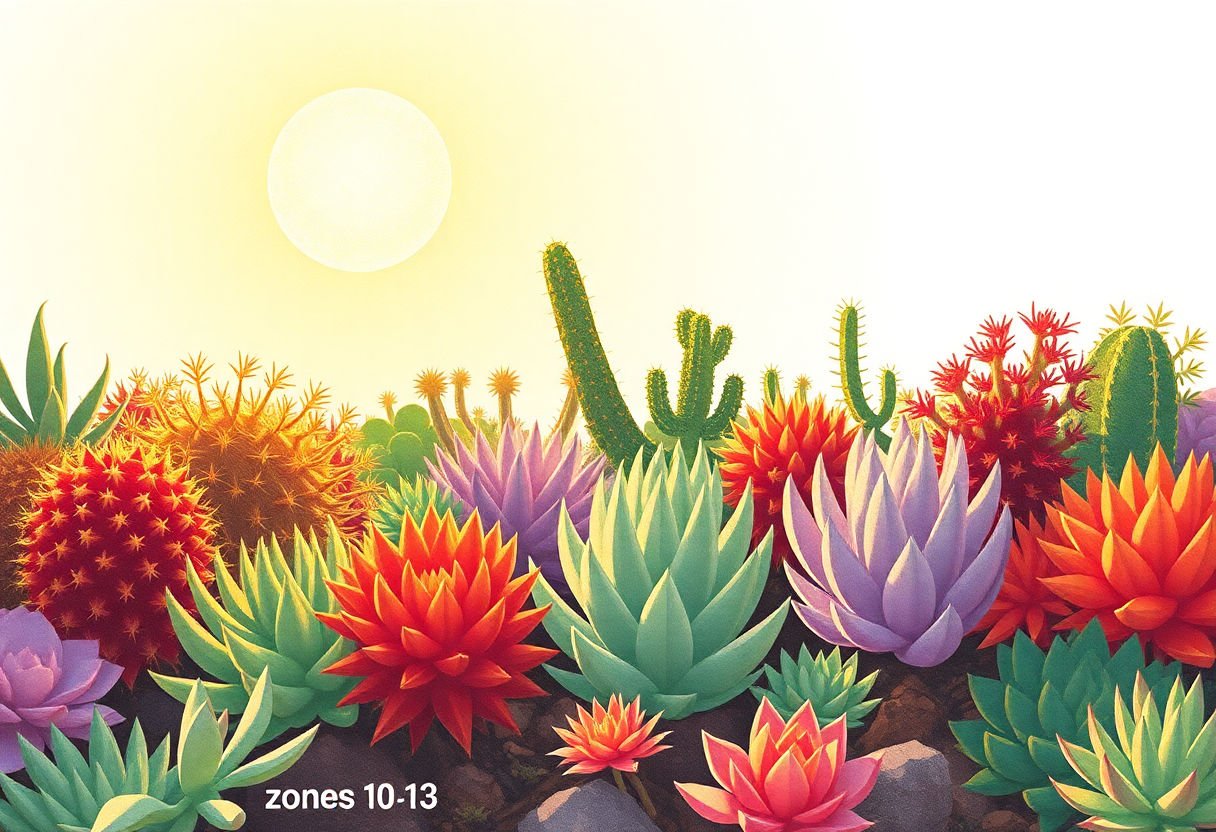
Warm climate zones, classified as USDA zones 10 to 13, offer ideal conditions for an extensive range of succulents. These zones, characterized by mild winters and hot summers, provide the natural habitat that encourages the exotic beauty and resilience of these plants. Succulents thrive in areas where the temperatures rarely drop below 30°F, allowing for continuous outdoor growth and vibrant displays of color and form.
In these warmer regions, succulents can benefit from the increased sunlight levels, which enhance their distinctive features. Water conservation strategies are equally essential, as these zones can often face prolonged dry spells. Therefore, employing appropriate soil with excellent drainage properties is crucial to prevent root rot and ensure that succulents flourish.
Here’s a brief overview of common succulent varieties suited for zones 10 to 13:
-
Agave: Known for their striking rosette formations and sculptural leaves, agave plants are drought-tolerant and can withstand intense sunlight.
-
Aloe Vera: Beyond its healing properties, Aloe Vera is renowned for its durability in hot climates.
-
Echeveria: With their diverse range of colors and shapes, Echeveria are popular for both garden beds and container gardening.
-
Jade Plant (Crassula ovata): This classic succulent is ideal for those preferring minimal care, adding bold texture to any landscape design.
-
Kalanchoe: Valued for their vibrant, long-lasting blooms, Kalanchoe plants can brighten any garden with minimal requirements.
These varieties exemplify the resilience and adaptability of succulents, making them ideal companions for gardeners in zones 10 to 13 seeking to add unique elements to their landscapes.
Growing Succulents Indoors
Growing succulents indoors offers numerous advantages, particularly for enthusiasts residing in areas not conducive to outdoor cultivation. Indoor succulents are perfect for those who wish to enjoy greenery without the challenges posed by regional climates. A significant benefit is their ability to purify air and add aesthetic appeal with minimal maintenance.
To cultivate succulents successfully indoors, providing the right conditions is crucial. Light availability is one of the most important factors. Succulents typically thrive in bright, indirect sunlight. Placing them near a south-facing window often yields the best results. If natural light is limited, supplementing with grow lights can ensure their health and vibrant appearance.
Another key aspect is maintaining the proper watering schedule. Succulents prefer a soak and dry approach, meaning they thrive when the soil dries out completely between waterings. Overwatering is a common mistake, potentially leading to root rot. It’s recommended to water them sparingly, particularly in the colder months when their growth rate slows.
- Key tips for indoor succulent care:
- Ensure well-draining soil, typically a cactus mix or a combination of potting soil with sand or perlite.
- Use pots with drainage holes to prevent water accumulation.
- Rotate plants periodically to ensure even sun exposure.
Adequate temperature and humidity can further enhance the indoor growing environment. Ideally, succulents prefer a warm climate. Maintaining room temperatures between 60°F and 80°F and keeping humidity low can prevent issues such as fungal infections. By adhering to these considerations, indoor succulent gardening can become a rewarding and fulfilling endeavor.
Conclusion
Selecting the right succulents for specific USDA hardiness zones is crucial for ensuring their robust growth and resilience. By understanding the diverse environmental needs from cooler zones 3-6 to tropical 10-13, gardeners can enjoy thriving succulents year-round. As climate change impacts weather patterns, it is essential to adapt planting strategies accordingly. Embrace the beauty and versatility of succulents by choosing varieties that harmonize with your local zones, and remember that even indoor environments can sustain these fascinating plants with the right care. This strategic approach will bring enduring satisfaction and beauty to any green space.
Frequently Asked Questions
What factors determine the best growth zone for succulents?
The best growth zone for succulents is determined by temperature, humidity, and sunlight. These factors create an environment that either supports or challenges succulent growth, influencing their health and vitality.
Can succulents survive in cold climates?
Yes, certain succulents are capable of surviving in cold climates, specifically in USDA zones 3 to 6. These varieties have adapted to withstand lower temperatures and frost conditions, making them suitable for colder regions.
Is it possible to grow succulents indoors regardless of the zone?
Yes, growing succulents indoors is feasible in any zone as long as they receive adequate light and are planted in well-draining soil. Indoor conditions can be controlled to mimic their natural habitat, making it easier to maintain healthy plants.
How can I transition succulents from indoors to outdoors safely?
Transitioning succulents should be done gradually to prevent shock. Start by placing them outdoors for a few hours daily, gradually increasing the time over a week or more. This process helps them acclimate to outdoor conditions like direct sunlight and temperature variations.
Are there any misconceptions about succulent growth zones?
A common misconception is that all succulents thrive in hot, arid environments. While many do prefer these conditions, numerous varieties can adapt to cooler climates, demonstrating the importance of recognizing specific requirements for each succulent species.
